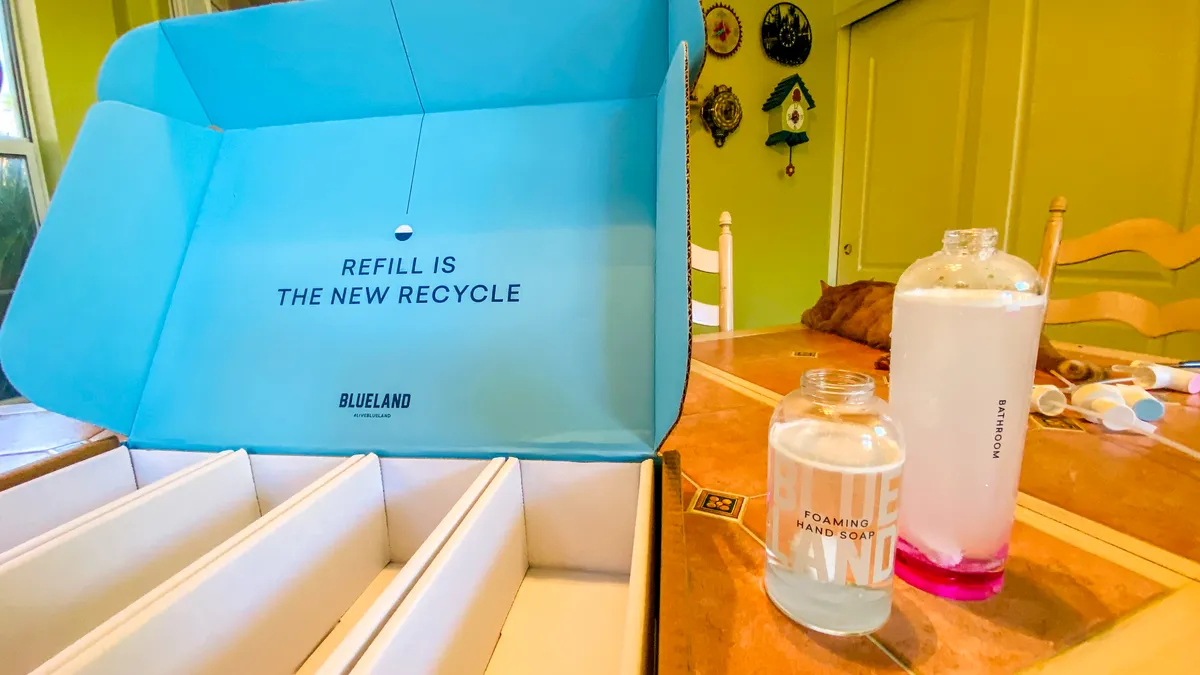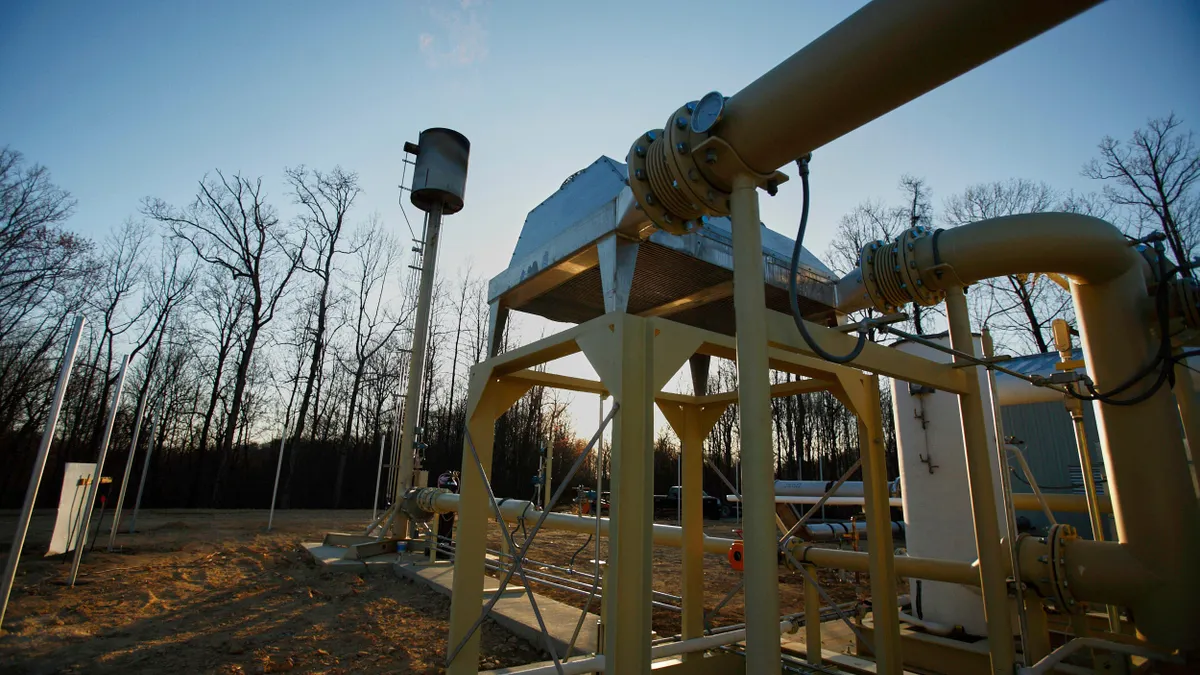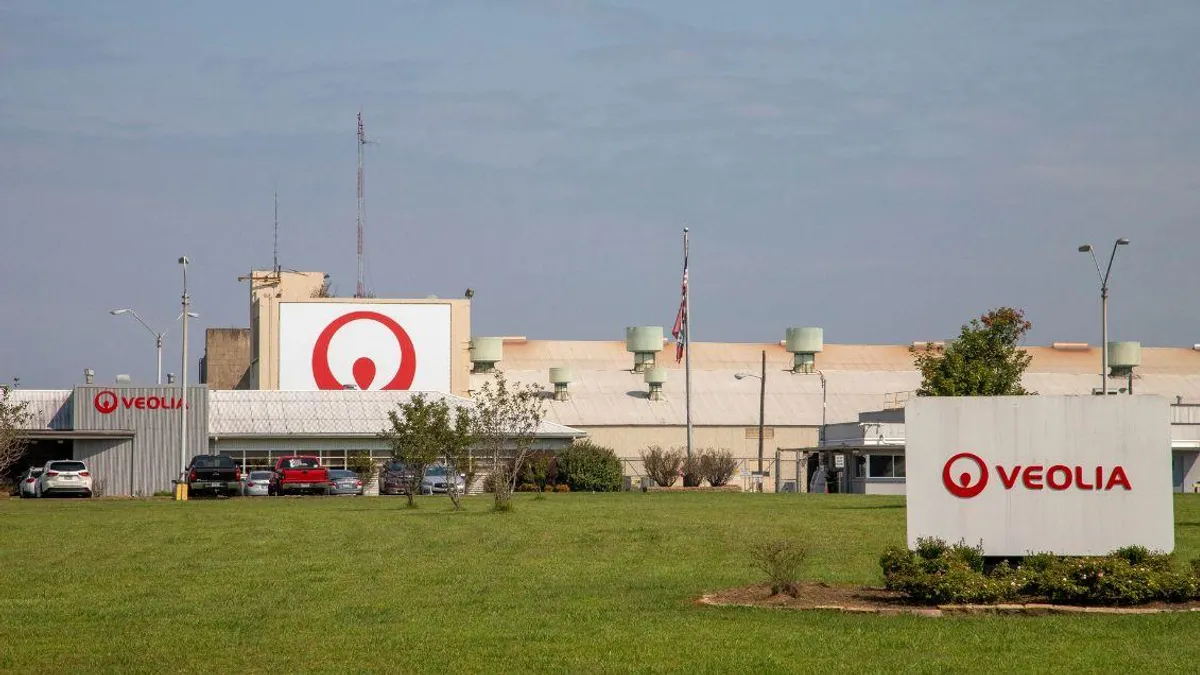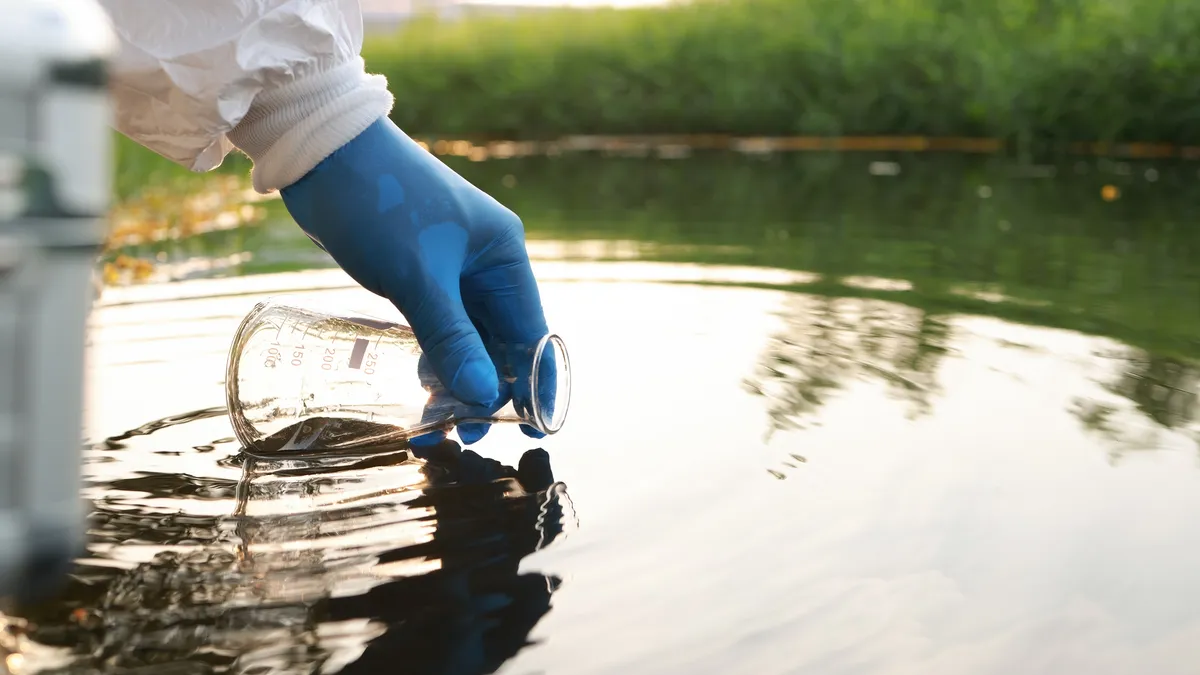The reduce, reuse, recycle mantra is commonplace in environmental education, but U.S. materials management infrastructure often glosses over the first two parts. Now, as plastics and waste issues are receiving growing attention, the modern reuse-refill sector sees a chance to go mainstream.
As CEO of Upstream, a Maine-based nonprofit with the mission to look beyond recycling and "redesign the systems generating all the waste in the first place," Matt Prindiville is at the center of many of these discussions. After years of resistance to concepts such as extended producer responsibility (EPR) and deposit return systems for packaging, he says big name brands are starting to come around, and many are interested in how reuse and refill systems fit into their sustainability goals. More consumers are engaging as well, including some who became more aware of their waste habits when staying home during the pandemic. Prindiville even sees a role for traditional waste and recycling service providers to participate as well.
To help make its case, Upstream recently released an in-depth report, "Reuse Wins," and it's hosting a new awards ceremony — The Reusies — on Sept. 30. The virtual event, produced in collaboration with Closed Loop Partners, will highlight innovative reuse concepts around the United States. Upstream is also working to engage local zero waste activists with reuse coalitions, to advance the case for reusable items in foodservice and support new collection models for reusable containers.
This conversation has been edited for length and clarity.
WASTE DIVE: In the beginning of the pandemic, there was a lot of concern about surface transmission, which pretty quickly became clear was unfounded, but that prompted a lot of temporary changes around reuse programs. What has the net effect been from COVID-19?
MATT PRINDIVILLE: Back at the beginning of the pandemic, we saw very quickly that people in the plastics industry — but it was really the plastic bag industry — took this moment to basically say that reusables are unsafe. This was a PR moment for them.
I think what we were really trying to do up front was (a) to make sure that these plastic bag bans weren't going away and (b) to make sure that there wasn't collateral damage. We had Tom Szaky, who's the CEO of TerraCycle and Loop, on a livestream at the time, and he said, "Let the plastics industry have their moment in the sun. It's not like the concern that people have around plastic pollution is just going to go away."
Policymakers and business leaders had to put this on the back burner for a little while, but that drive to do things on plastics in our waste only grew during the pandemic. I think part of the reason why it did grow is because all of us stopped shopping at stores, and we started ordering everything delivered to our house. I think people were starting to really be confronted with the amount of one-way, throw-away, single-use packaging that is in our lives.
I think it's created an opportunity for us. We've been leveraging this, not just with consumers, but really working with business about, how do we get people what they want and need without generating all the waste in the first place? If we had some of these incredible reuse-refill services and systems and businesses in place before the pandemic, we'd still be getting everybody their groceries and their coffee and their to-go meals, but we wouldn't be generating all this garbage on the back end of it.
It seems like right now, more people have bought in to caring about waste, but they don't have the full picture. To get into the complexities of life-cycle analyses and everything else, will a whole new round of education be needed for the public and policymakers?
PRINDIVILLE: Absolutely. I think that the big word here is vision.
The big businesses have been really thinking about this right now, which is exciting. They've gotten the buzz around the circular economy, and they're having these conversations, because they operate all over the globe. The fact that the Europeans are three or four or five steps ahead of us on this is influencing the conversations that are happening here in the United States.
But for the average person and the average policymaker, or average business leader, when you think about plastics and waste, it's like, "I've got to bring my own bottle everywhere, and my coffee cup. Oh, and I should recycle more. And this brown box is better than the Styrofoam box." That's where most folks are at.
For us, one of the central questions is, how do we get people aligned around a greater vision for what a circular economy for packaging looks like? So that idea of getting people excited about, not only could they get the things that they want and need, but that the packaging systems that are used to get them that stuff are reusable, refillable systems that are convenient and easy for them to engage in.
If we can make the way that they interact with these systems convenient — maybe not as convenient as, just, I throw it in the garbage, but close to as convenient — it's going to be better. If I'm drinking my coffee out of a stainless steel reusable mug that I basically borrowed in this system, or I'm eating my meal out of a to-go container that's not a flimsy throwaway container, that's a better experience. Or when I need some more hand soap, I just drop a tablet in the bottle that they sold me eight months ago and fill it with water.
Those kinds of experiences, I think, help to alleviate some of the guilt that not everybody, but many of us, feel about the overconsumption lifestyle of your average American.
Will certain segments be easier to shift than others? For example, some of the takeout container services you highlight feel like they'd have to be more regional or local. Whereas maybe a grocery or e-commerce system could be larger scale?
PRINDIVILLE: Yeah. The beautiful thing about reuse services and systems is that they are resilient. At the end of the day, it's about container washing, and [those systems] have to be regional in order for them to be able to operate and serve a city and a metro area.
We're currently at the end of this global economy that was really built around cheap labor and cheap materials. What's happened in the last 10 to 15 years is that the price of labor and the price of materials in other parts of the world, where we've been sourcing a lot of our raw materials and making our products, all the prices of those things have gone up. It's enabling a return to local and regional economies, and even national U.S. economies, like trying to keep the recycling here instead of doing it all over China.
We look at things as far as easy-to-implement versus more complicated. It's very easy to move away from single-use for on-site dining. The value proposition is there. We've proved that 100% of the time, businesses save money. If you don't have dishwashing on site you can contract out, just like you do for linens. The next level up is takeout, and the next level up from there is delivery. Then we start looking at prepared food in the grocery store and grocery delivery. Then we're starting to look at other ways of getting either your personal care products or your sundry items, laundry detergent, etc., through online delivery.
It's a misconception to think that we want reuse-refill for everything. Like snack packaging, that's a tough one. But when you talk to the people that are really thinking about this and excited about it, could it be 20% of the grocery store? Could it be 25%, could it be 30%? It could be even more moving forward.
Lately, it feels like any time we see a major consumer packaged goods (CPG) or beverage company announce a new plastics initiative, some groups will call that greenwashing because it's not being done at scale. Then there are others who don't want these large companies involved at all. How do you balance all of that as you work on these issues?
PRINDIVILLE: What's interesting is when we look at the EPR and deposit refund conversation that's happening in the U.S. right now, I pulled my teeth out for 18 years to try to move these ideas forward. Now it's all kind of coalesced in the last couple of years, where we've seen these major shifts from big companies that are responding to the demonization of their products winding up in the environment and also the issues that are happening with supply chains and materials and China rejecting low-value recyclables.
One of the things that is often not really talked about is the leadership changes that have happened in these companies. You have a younger generation that's moving into positions of leadership that have a lot of influence, and they have different values than the folks that are on their way out. We've seen major shifts in companies, not just around EPR and deposits, but also around the concept of reuse-refill. So one of the things that we've been trying to do at Upstream is make sure that the reuse-refill conversation is in the center of these EPR and deposit conversations that are happening here in the U.S.
In Europe, they started doing EPR 30 years ago, and they've got deposit refund systems throughout the continent that are happily cohabitating with and reinforcing the EPR systems. Now they're talking about mandatory reuse-refill targets. What we're seeing is that there's been a resurgence of this idea that EPR has not gotten us to source reduction. It hasn't gotten us to reuse-refill, it hasn't moved us further up the chain to actually reducing packaging.
I've seen some big shifts from some of the biggest beverage companies, and some big shifts from CPGs, around this idea. The conversation is happening because I think people are understanding that if they really want to meet their ESG goals — including around climate and around waste — they have to think beyond recycling. Otherwise, it's disingenuous. Even five years ago, it was still like, "no we don't want to do this, we're going to fight you all the way."
Do you see these big companies as necessary to help achieve this at scale, with brands that people recognize and at a cost they'll consider economically viable?
PRINDIVILLE: You almost have to separate it out by sector.
When I was a kid, we only had garbage, and then we got the recycling bin, and then we got the composting bin. I think in the future, we're going to have the reuse bin — both at home, at the office, and when you're out on the go. Our goal is to pull as many of the containers that are currently in the garbage bin and in the recycling bin, and potentially even in the compost bin, into the reuse bin.
Looking at the different sectors, you've got food service, which, I think that's really going to be about infrastructure. On the beverage side, the deposit system is a proven way to get the bottles out of my house or apartment and into the hands of the people that want those materials. That's the beauty of that financial incentive, is people want their money back. Looking up the chain to CPGs, then I think it is going to require a significant amount of investment into platforms like Loop and Algramo, working in partnerships with the grocers and the retailers to have kiosks in the store or outside of the store for product dispensing, as well as for returning the containers.
Also, I think one of the things that is good for reuse with the CPGs is that oftentimes, for a lot of these products, the most expensive thing is the package. So if they can basically create package-less systems, or systems where they own the packaging and they get it back (because there's a deposit on it, or there's some penalty or incentive for the consumer to bring it back), they're saving money.
A lot of these, when we talk about reuse systems, are either the company providing it to you, and they own the packaging, and they've got their own system for getting it back. Or they're contracting with a third party, or contracting with a reuse service, like a Loop, or one of these takeout and delivery companies around reusable containers. Those companies are the ones that are working to figure out, "how do we get to scale so we can bring the cost down so it's comparable to disposables?" The goal for many of them is, "how can we make it less?"
It sounds like local governments may be happy with the potential for these systems to reduce litter and waste-management costs. For waste and recycling companies, some have ESG goals about recycling more and say they can help clients adjust their operations, but they don't necessarily expect a massive shift in waste volumes. Is there a scenario where a waste service provider could be the one who comes to pick up the reuse bin?
PRINDIVILLE: For us, that's the vision. Waste management companies can come in and retool to also provide reuse services. Because these companies are going to households, restaurants, office buildings, stadiums, and they have these contracts in place.
For a closed system, like a stadium, you've got a dishwashing facility in a trailer hanging out outside the stadium that's washing tens of thousands of cups and providing that service back to the stadium.
In an open system, where you've got a city where everybody's doing their takeout food and their takeout cups, that's a great place for a waste management company to come in and say "we can pick that up, we can run logistics for that, we can get that to the warewashing warehouse, and then we can also get it back to the customers that might want it." So they can either pick up one part of that chain or multiple parts, or even say, "we're going to build a warewashing facility here, and we're going to get into the business of reuse services." For us, that's where we want to go, and that's where we see this could also be a benefit to those companies.
I had Ron Gonen [founder and CEO of Closed Loop Partners] on one on our podcasts, and he said this statement that I've been trumpeting ever since: The current economy is basically built to support the extractors and to support the wasters. And you've got the consumer goods companies, and food service and beverage and all the companies that are in the middle, they just want people to buy their products. For them, it'd be much better if they didn't have to rely on extraction and virgin materials. It's better all the way around for them, for their brand image and for their ESG goals. It's far better if they know that their packaging and their products are actually being stewarded in a closed-loop system than just thrown into a landfill.
If we end up seeing waste management companies competing for the city contract for reuse with new local companies, I'm sure it's going to be quite something to watch. Some may be more receptive to it than others.
PRINDIVILLE: These companies know how to run logistics. They know how to run routes. It's just a different product and a different destination. And what's great, too, is there's more control, because these are regional systems.
So what's exciting is that when waste management companies and reuse service providers and food service and beverage and CPGs can partner on building these resilient systems, the stability over that market is much greater than "what's the global price for aluminum today, or PET, or oil?" There's so many more factors that go into influencing that and so many things that are out of the control of most of these companies.


















